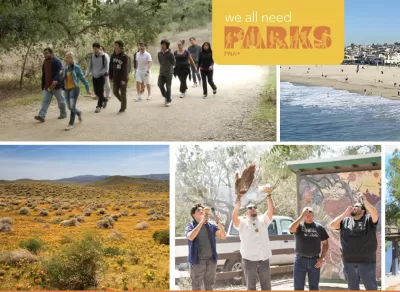Data storytelling refers to the ability to effectively communicate insights from data using narratives and visualizations. When done right, it can be used to put data insights into context and inspire action from decisionmakers.

There is no question that our world has become increasingly data-driven. While not everyone is involved in data collection, analysis, visualization, or storytelling, we are all becoming more dependent on data to guide, inform, and justify our work. Thus, we should embrace the use of data to advance our work in the same ways that we have grown accustomed to relying on data-driven devices like smartphones, fitness trackers, and global positioning system (GPS) navigation in our daily lives.
In this blog post, park planner Clement Lau explains the importance of data visualization and storytelling, with a focus on parks and recreation. For good examples of data visualization, he suggests that readers take a look at the National Recreation and Park Association (NRPA)’s Park Pulse Surveys and how the survey results are presented and summarized in infographics, charts, etc. Another example is how the Los Angeles County Department of Parks and Recreation (DPR) presents the key findings of its 2016 and 2022 Parks Needs Assessments in maps, graphs, and infographics in fact sheets, executive summaries, and final reports.
We often hear the expression that “numbers speak for themselves,” but this is not necessarily true. Lau points out that it really takes time, effort and skills to make sense of, present and communicate insights from data. For more information, please read the source article.
FULL STORY: The Importance of Data Visualization and Storytelling in Parks and Recreation

Planetizen Federal Action Tracker
A weekly monitor of how Trump’s orders and actions are impacting planners and planning in America.

Map: Where Senate Republicans Want to Sell Your Public Lands
For public land advocates, the Senate Republicans’ proposal to sell millions of acres of public land in the West is “the biggest fight of their careers.”

Restaurant Patios Were a Pandemic Win — Why Were They so Hard to Keep?
Social distancing requirements and changes in travel patterns prompted cities to pilot new uses for street and sidewalk space. Then it got complicated.

Platform Pilsner: Vancouver Transit Agency Releases... a Beer?
TransLink will receive a portion of every sale of the four-pack.

Toronto Weighs Cheaper Transit, Parking Hikes for Major Events
Special event rates would take effect during large festivals, sports games and concerts to ‘discourage driving, manage congestion and free up space for transit.”

Berlin to Consider Car-Free Zone Larger Than Manhattan
The area bound by the 22-mile Ringbahn would still allow 12 uses of a private automobile per year per person, and several other exemptions.
Urban Design for Planners 1: Software Tools
This six-course series explores essential urban design concepts using open source software and equips planners with the tools they need to participate fully in the urban design process.
Planning for Universal Design
Learn the tools for implementing Universal Design in planning regulations.
Heyer Gruel & Associates PA
JM Goldson LLC
Custer County Colorado
City of Camden Redevelopment Agency
City of Astoria
Transportation Research & Education Center (TREC) at Portland State University
Camden Redevelopment Agency
City of Claremont
Municipality of Princeton (NJ)





























